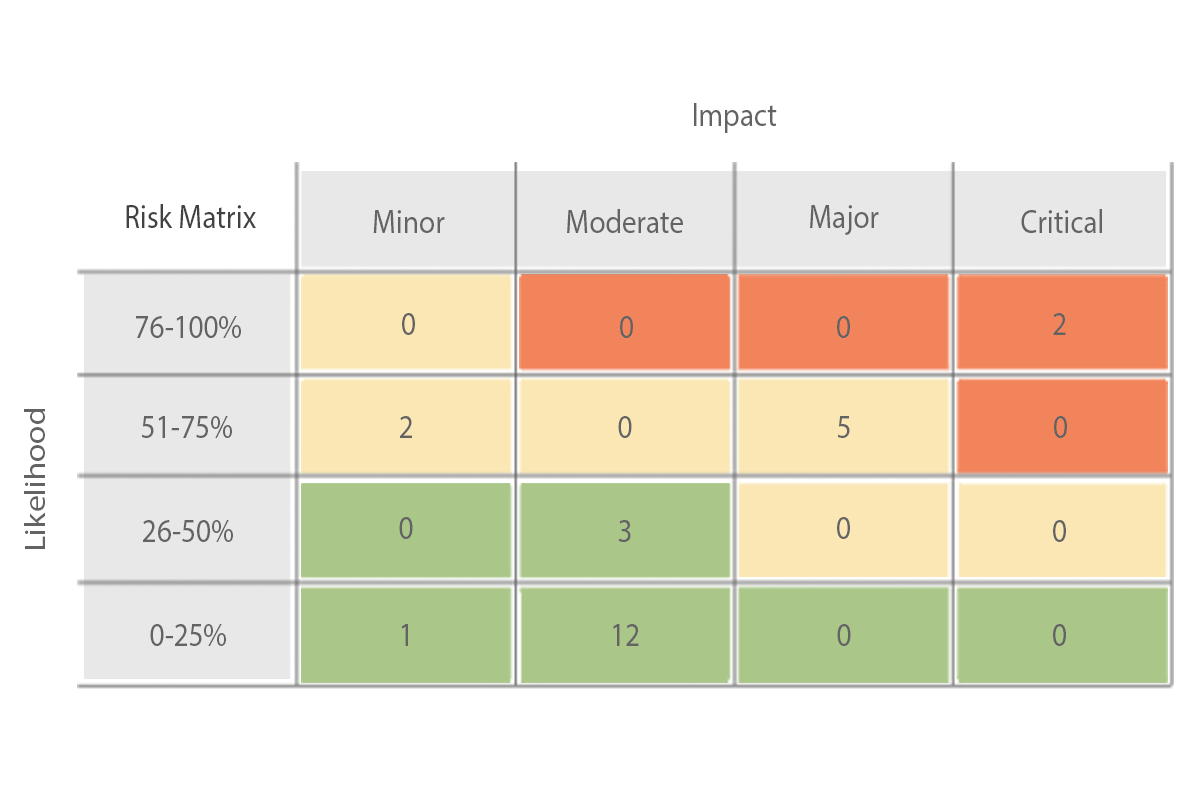What is the matrix system for risk evaluation and why should we talk about it? Well, it’s pretty simple. In today’s era of changing market trends, risks are unavoidable.
Whether it’s a start-up or a multinational company, in the end everyone faces risks that require the utmost dedication.
Every time you start a new business, one of the most important questions to ask yourself is “what could go wrong?“.
CONTENTS
Some issues are in fact destined, in most cases, to go wrong during the life cycle of a project.
It is not easy to assess risks, even less to manage them, and if you are not ready to assess and control these risks, the very survival of the project could be at stake.
Companies spend a lot of time and financial resources analyzing different types of risks and devising valuable measures to reduce their impact.
There are some essential steps that need to be taken for proper risk management.
The risk management process – or risk management – begins with a risk assessment and then moves on to risk analysis and actions to be taken to minimise it.
The project risk analysis is not a simple process and there are various methods for effective risk management and one of those methods used for risk evaluation is the matrix system. So let’s examine it further in this article.
What’s the risk matrix?
The risk matrix is also known as the probability matrix or impact matrix.
It is an effective tool that helps in the risk assessment considering the probability versus the severity related to the potential risks of a project.
A risk matrix is a visual representation of the risks associated with a particular project to help organizations prepare a containment plan and the resulting decision making process.
In a nutshell, it is a tool that helps to reduce the impact of risk that might otherwise result in negative costs for the company.
The matrix consists of a grid, showing the probabilities on the Y-axis and the resulting impact on the X-axis.
These two elements are considered to depict accurately the nature of the risk.
Different levels of risk in the risk matrix

A risk matrix looks just like the one shown in the picture and features different levels of risk:
- Critical or high priority risks: these risks hold a high call to action. They are an absolute priority and must be addressed immediately.
- Main risks: these risks are also high, although generally classified lower than the “extreme” risk cell seen previously.
- Moderate risks: These risks are also referred to as medium level risks. They do not rank high priority and are associated with the development of an alternative strategy to overcome possible blockages during the life cycle of a project.
- Minor risks: Last but not least, these risks represent a low ranking in the risk evaluation matrix, but this does not mean that they aren’t important. However, these risks tend to be considered only after the major risks have been mitigated.
The grid of a risk matrix is used to assign a certain priority to the risk.
The resulting figure therefore helps to understand the nature of the risk and what needs to be done to minimize it.
In addition to these divisions, as can be seen in the figure, there are three main zones within the matrix.
After having analyzed the risk, it can belong to one of these three zones:
- A low-risk area considered acceptable – coloured yellow;
- A moderate risk zone that may or may not be acceptable, coloured green;
- A high risk area considered critical or unacceptable, coloured red.
These areas makes the result of a risk matrix more open, giving a clear division as to the priorities and future steps to be taken.
The advantages of a risk matrix
Let’s examine some of the advantages of a risk matrix and how it can be effectively used for risk management. A risk matrix helps to:
- Prioritize risks according to their level of severity;
- In risk planning, it helps to neutralize possible consequences;
- Allows the analysis of potential risks with minimum effort;
- It improves the security measures of the organization;
- Gives the team an overview of the potential risks of a project.
Without a risk matrix, chaos can result within the organization and some unexpected circumstances can be faced.
By contrast, using the risk matrix for risk management will not only reduce the probability of the risk itself, but will also reduce the magnitude of its impact on operations.
It provides timely data that quantifies threats and facilitates the organization to take consistent measures to reduce the potential chaos that could occur in the event of ambiguities or wrong decisions.
The numerical values in the risk matrix provide an effective way to represent the organization’s exposure to risks and how much effort is required to minimize them.
For a project manager, it is also possible to create a risk assessment matrix and integrate it into project management software (link to home) or create one directly within innovative project management software.
Having a clear view of risks in any organization is in fact a tool that can change the perception of any project.
However, it is important to understand that a risk matrix is a tool and not a complete solution for the needs of a project.
The final decision and how risks are handled depends on the intellectual value of the people who interpret the results of the risk matrix.




